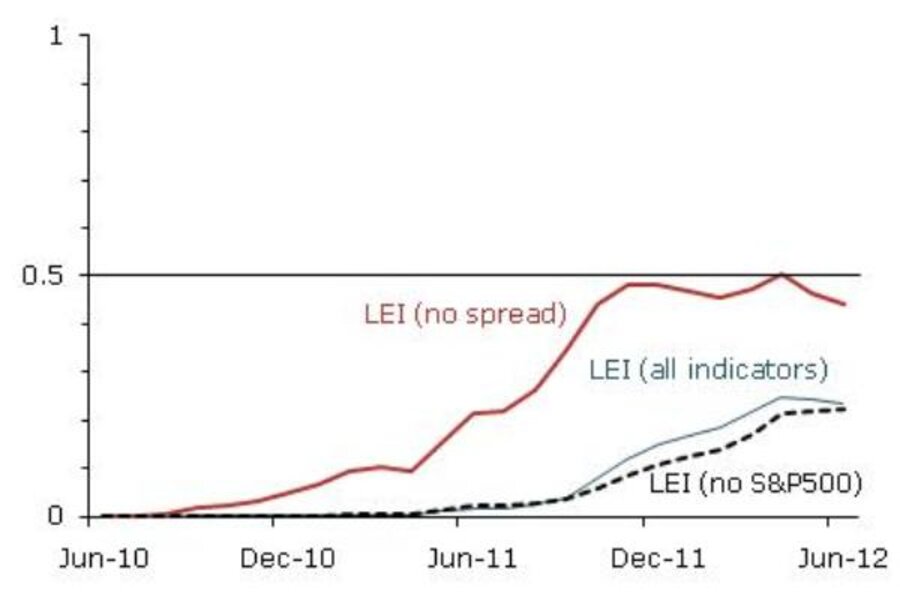Odds of double-dip recession: 25 percent. No, 50 percent!
Worries about a double-dip recession have spawned much economic commentary … and a humorous country and western song. So how likely is a return to recession?
Researchers at the San Francisco Fed took a crack at this question a few weeks ago. Their answer? It depends.
When they used a traditional model based on the leading economic indicators, the probability of a second dip turned out to be about 25% over the next two years (the blue line). When they dropped one indicator from their model, that probability doubled to about 50% (the red line).
That important indicator is the yield spread–the difference between the 10-year Treasury interest rate and federal funds rate. In recent decades, the yield spread has done a terrific job at anticipating recessions. When the federal funds rate has risen above the 10-year rate, the economy has invariably fallen into recession.
As I noted briefly the other day, the relative steepness of today’s yield curve (10-year rate about 2.5 percentage points above the fed funds rate) thus suggests, by itself, that renewed recession is unlikely, despite recent weak economic data. On the other hand, there are reasons to believe that this time things are different (usually a scary phrase). After all, fed funds rate has been pushed down almost to zero and yet the economy no longer appears to be responding. That’s exactly the logic that inspired the SF Fed researchers to try their model without the yield spread.
Add/view comments on this post.
------------------------------
The Christian Science Monitor has assembled a diverse group of the best economy-related bloggers out there. Our guest bloggers are not employed or directed by the Monitor and the views expressed are the bloggers' own, as is responsibility for the content of their blogs. To contact us about a blogger, click here. To add or view a comment on a guest blog, please go to the blogger's own site by clicking on the link above.





